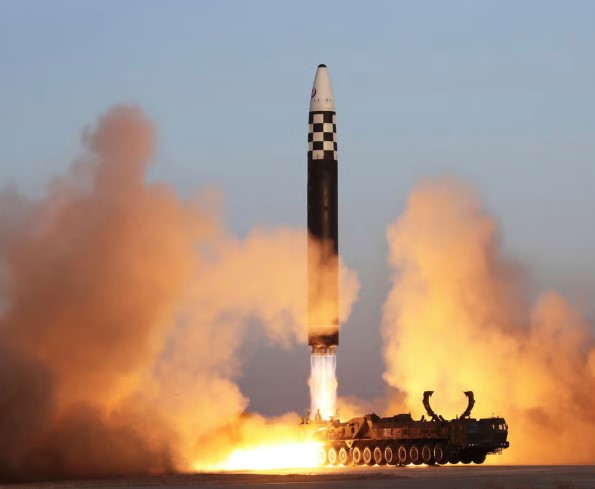On Thursday, South Korea’s military reported that North Korea had fired several ballistic missiles into the sea. These missiles were launched from an area near the city of Wonsan in eastern Korea.
New Missile Launches Reported by South Korea
The missiles flew toward the eastern waters, although it was not immediately clear how far they traveled.
These missiles were most likely short-range ballistic missiles, according to confirmation from the South Korean Joint Chiefs of Staff. These types of weapons are usually designed to hit targets that are not very far away but can still cause significant damage. After the launch, South Korea took quick action to strengthen its military monitoring systems. It also shared details of the launch with two key allies—the United States and Japan.
This missile launch is not the first this year. In fact, it marks the sixth time North Korea has carried out such a launch in 2025. The last known launch took place on March 10. That earlier launch happened just hours after the start of a joint military exercise between the United States and South Korea. These kinds of military drills are often met with anger from North Korea.
Rising Tensions across the Region
Tensions have been steadily rising on the Korean Peninsula. North Korea continues to focus on developing its weapons systems, including both nuclear and missile technologies. These efforts have made nearby countries more alert and concerned. The recent missile launches add to the growing list of actions that have raised alarm in the region.
12,000 North Korean Troops Secretly Helped Russia Seize Kursk from Ukraine
In addition to launching missiles, North Korea has been increasing its military cooperation with Russia. Recently, the country’s state media shared that their leader visited a group of munition factory workers. During that visit, they were told to increase the production of artillery shells. These are explosive weapons that are fired from large guns and are used in heavy fighting.
This visit was reported just one day before the latest missile launches, which has led to more speculation about the link between North Korea’s weapons testing and its growing support for Russia. It is part of a pattern that has been forming over the last several months.
For a long time, North Korea denied any involvement in the war between Russia and Ukraine. However, last month, that denial changed. The nation acknowledged sending troops to support Russian forces. These soldiers were dispatched to aid Russia in retaking some areas of the Kursk region. This area had previously been taken by Ukrainian forces during a surprise attack last year.
North Korean Troops and Weapons in Russia
South Korean intelligence agencies have been watching these developments closely. Their most recent estimates place the number of North Korean soldiers transported to Russia at about 15,000. This number is especially concerning because reports suggest that almost 5,000 of these troops have either died or been injured while fighting in Ukraine.
Putin Rejects Use of Nuclear Weapons in Ukraine, As Drone Strikes Hit Kyiv Amid Ceasefire Talks
In addition to sending soldiers, North Korea has also been supplying Russia with weapons. These include artillery systems, shells, and even ballistic missiles. Ballistic missiles are powerful weapons that follow a curved path after being launched and can cause large-scale destruction when they hit their target.
Both U.S. and South Korean officials have charged North Korea with providing Russia with military supplies. These actions have further increased concerns in the region and among global leaders. There are worries that North Korea’s continued involvement in the conflict could make things worse, not only in Eastern Europe but also in East Asia.
The growing link between North Korea and Russia seems to be getting stronger with time. The missile launch on Thursday and the push for more weapon production appear to be signs that this partnership is not just about words—it includes real weapons, real soldiers, and real military support.
As South Korea keeps a close watch, more surveillance and security steps are being taken. The government is working with international partners to stay updated on North Korea’s military actions. These efforts are aimed at keeping the region stable and informed, even as tensions continue to rise.

